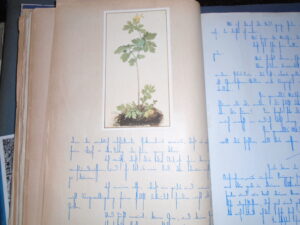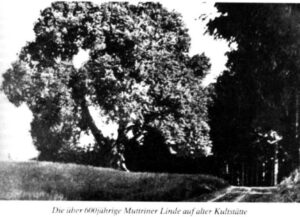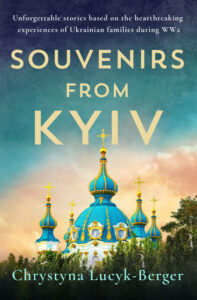Whoever cleans himself in this bath
Unites with God
And cleanses in one bath
His body and soul, as he should.
Thomas Murner, Badenfahrt 1514
Whenever I return home from a long trip, one of my first pleasures is to take a shower, appreciative all over again of the luxury of a bathroom that is clean and bright, with a properly functioning shower head and all the comforts of 21st century living. When I sent my protagonist in my 12th century historical fiction book Alina: A Song for the Telling on her journey from Provence all the way to Jerusalem, I gave some thought to the details of traveling in the Middle Ages and the challenges of keeping clean.
The Middle Ages have all too often been given a bad rap for personal hygiene and bathing options. While one certainly did not have access to private bathrooms with large smooth tubs and showers or even multiple shower heads as some more given to decadent pleasures would have it, people liked to bathe.
Now some images of bathing in the Middle Ages look positively decadent. Trays set on top of large tubs hold glasses of wine and platters of food; multiple bathers sit around a chess set perched on the rim of their tub; lute players provide entertainment in the background; and servants pour pitchers of water over bathers sitting in their tubs, lined with cloth for greater comfort. Bathing was apparently a communal activity where gossip, refreshments, commercial transactions, and games could be shared while soaking in steamy water.
Alina lived in a small castle in Provence. She bathed in a wooden tub with water heated over the fire. While her father had managed to run down his estate, he still had servants to help with daily tasks such as carrying heavy pitchers of water around. Filling a tub with water is hard work, and people often shared the bath water. The water undoubtedly had cooled off and was slightly murky by the time it was Alina’s turn.
In Alina’s day, firewood for heating water was still readily available. Hence, most towns until the mid-1200s had public bathhouses. Of course, there was always a certain risk involved in that fires could burn out of control and consume several houses in the neighborhood. Meanwhile, thanks to overuse, forests were becoming depleted (sounds familiar, doesn’t it?), and firewood became more expensive. By the mid-1300s, bathing in hot water became a luxury that only the very wealthy could afford.
While traveling, Alina’s choices were limited. When passing through towns, she could visit public baths. When staying in crowded inns, she often had to make do with a washcloth and water poured into a little bowl. Travelers and residents alike appreciated good bathing facilities as Alina finds out when encountering other travelers.
Excerpt:
I found it fascinating to talk to other travelers, especially those claiming to be on a pilgrimage. To my amazement, the roads were busy, and at times we had to carefully maneuver our horses around horse-drawn carts and groups of people walking along. The last family I chatted with told us they wanted to pray for their departed mother’s soul. But the husband proudly showed me a book they had purchased, called Mirabilia Urbis Romae, which apparently listed and described various sites of Rome they hoped to visit.
“I heard that there are fabulous baths in Rome, and the food is said to be delicious.” His wife beamed in anticipation.
“Ah, women.” Her husband smiled at her indulgently. “I am more interested in the aqueducts myself.”
Perhaps we weren’t the only ones whose motives for undertaking a pilgrimage didn’t bear closer examination.
Regardless of what one might think of Crusaders and their actions, there are a few areas where we have to be thankful. Not only did Crusaders help to popularize the art of knitting which originated in the Middle East, but they also introduced Europeans to soaps that might well be described as luxury items compared to the standard soap. Traditional soap was made from ash and lime mixed with oil or mutton fat and formed into solid cakes with the aid of flour. Crusaders introduced Europeans to Aleppo soap. This pleasantly scented hard soap was made with olive oil, laurel berry oil, water, and lye.
Crusaders also were not averse to massages offered in steam baths or the scented oils stored in lovely glass vessels produced in the Middle East. More importantly, they liked the plumbing they encountered on their travels. Inspired by Byzantine baths as well as Roman aqueducts and sewers, they built bathing facilities in Jerusalem and Acre among other Crusader strongholds and tried to replicate some of this in Europe.
When Alina and her fellow travelers reached the outskirts of Venice, they rested for several days before continuing on the road through the Byzantine Empire.
Excerpt:
The inn had a clean common room, and, even better, there was a public bath close by. Originally constructed by the Romans, it was a beautiful, spacious complex. Curiously, I studied the intricate mosaics on the walls of the entrance. I had never seen anything like them, so rich and vibrant, and this was merely a bath.
“You like?” asked the attendant in an oddly accented Latin.
I smiled at him. “Yes, I like.”
“Come from Byzantium.” He pointed at the mosaics. “All new.” He handed me a towel and pointed me toward the changing rooms set aside for women.
Inside I found a hot-water pool and a cold-water basin as well as an exercise area. There even was a steam room. And I had the place almost to myself. Just a few older women were soaking in the warm water. On a bench on the side of the cold-water basin, an old woman lay face down on a pillow, and an attendant massaged her back, which was exposed all the way down to her waist. Embarrassed, I looked away, and chose to make do with the hot-water pool. It was wonderful. Hours later, relaxed and content, even if my skin had shriveled from the long immersion, I returned to the inn.
Later on, Alina discovers the pleasures offered by wayside inns in the Byzantine Empire:
Inns in the Byzantine Empire were called caravanserais. Located along busy merchant routes all across the Empire and south to the Holy Land, these caravanserais made me think of small fortress towns. Framing a large central courtyard, they supplied everything travelers might need—sleeping areas, kitchens, blacksmith services, doctors, and even people specializing in the care of animals. The rooms were clean and comfortable, and the braziers used to provide heat seemed a lot more efficient than open hearths.
“Wait till you see the marble in the bath.”
“This place has a bath?”
“Yes, isn’t it wonderful?” Lana laughed at me as we rode up the hill. “I have been here before. It’s because of the traders—they like their creature comforts, and pay well to have the baths set up.”
Often in our daily lives, we forget how lucky we are to be able to enjoy fresh, clean water coming straight out of a tap and to be able to fill a bathtub with hot water within minutes. Crises such as the extreme water shortage in Cape Town, South Africa in 2018—narrowly averted by stringent measures and behavioral changes on part of the residents—or the disaster in Flint, Michigan (2014-2019) where lead from corroded pipes leached into the water supply of an entire city, inflicting lasting damage on many of its residents, in particular, its children, alert us to this challenge—until it fades from the media, and we forget again, oblivious to the reality that this will be one of the paramount challenges of the 21st century. In that context as well as for learning more about another age, reading about bathing and personal hygiene in the Middle Ages is enlightening and enjoyable. Occasionally, it even inspires envy.
There are many entertaining and informative resources available if you want to read up on bathing in the Middle Ages. I name a few for your information.
Sources:
Stunning images of baths dating back to the Byzantine era. The Mygdonia bath is from 1400, and the Justinian is from a full 500 years earlier – 900 AD. You can go and visit when travel once again is an option. https://thessalonikilocal.com/loutra-lagada-experience-historic-byzantine-baths/
Wonderful details re. bathing and personal hygiene: http://www.todayifoundout.com/index.php/2019/08/did-people-in-medieval-times-really-not-bathe/
Some interesting analogies re. fears of infectious diseases and the declining popularity of public baths upon the advent of Syphilis. https://rosaliegilbert.com/cleanliness.html
Fascinating details about baths and bathing culture in the Middle East: Just to mention one noteworthy item, a scholar from the 10th century, Hilal al-Sabi’ (969–1056), estimated that Baghdad at its height had 60,000 bathhouses. Even if this was an exaggeration, it is still a remarkable reflection of the importance of bathing at that time. https://www.metmuseum.org/toah/hd/bath/hd_bath.htm
The following article contains details about the popularization of sweat baths, partly inspired by the Vikings’ version with hot rocks in a wooden room and the Turkish and Arab hammam, a steam-bath sauna. https://www.mikkelaaland.com/bathing-in-medieval-europe.html
Featured image:
Artist, U. (2018, May 31). Medieval Noble Taking His Bath. World History Encyclopedia. Retrieved from https://www.worldhistory.org/image/8851/medieval-noble-taking-his-bath/ [public domain]
Also see:
Murner, Thomas, Badenfahrt: Neudruck nach der Ausg. Strassburg 1514, mit Erläuterungen insbesondere über das altdeutsche Badewesen (German Edition) (German). Hansebooks, 2016.
https://www.ancient-origins.net/artifacts-ancient-technology/medieval-hygiene-might-have-been-better-you-think-009332
https://www.ancient.eu/Medieval_Hygiene/
https://www.medievalists.net/wp-content/uploads/2013/04/MIMI_76F21_015R-e1404071009369.jpg
https://www.defenderofjerusalem.com/crusader-hygiene.html
Smith, Virginia, Clean: A History of Personal Hygiene and Purity. Oxford University Press, 2007.







